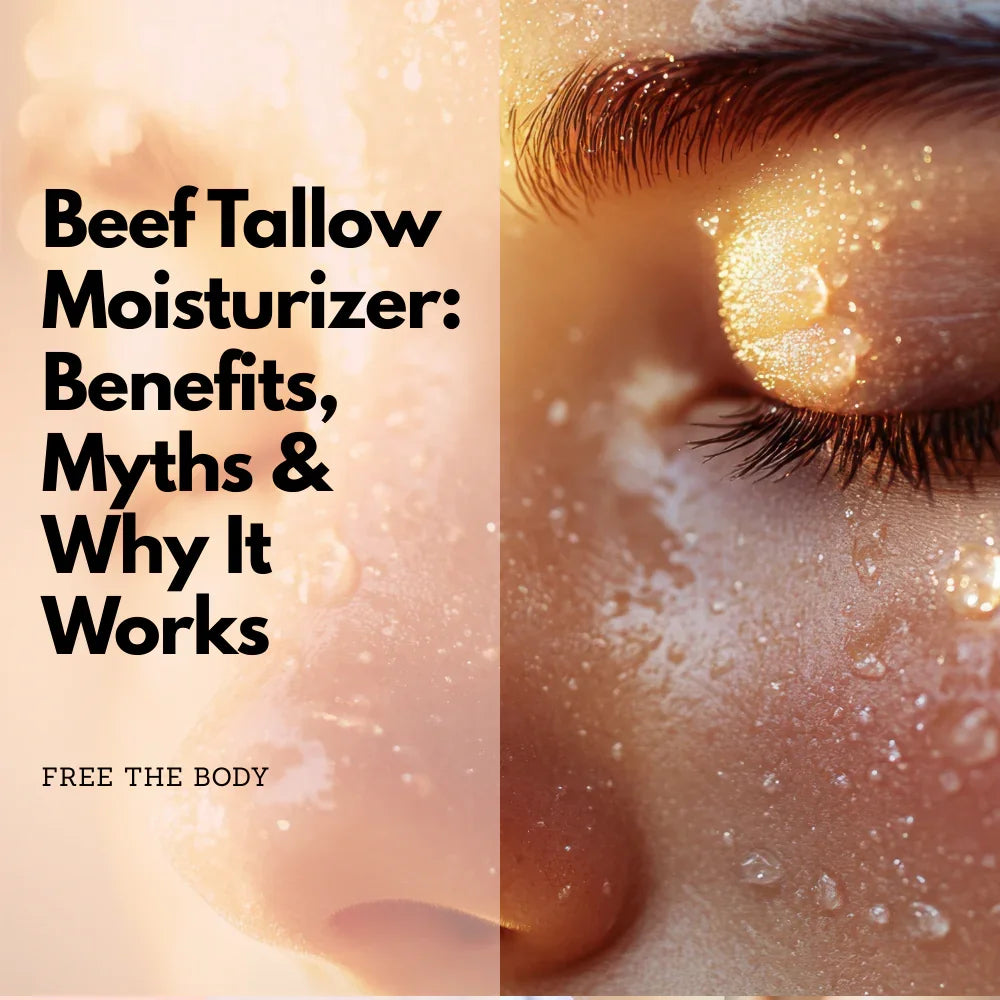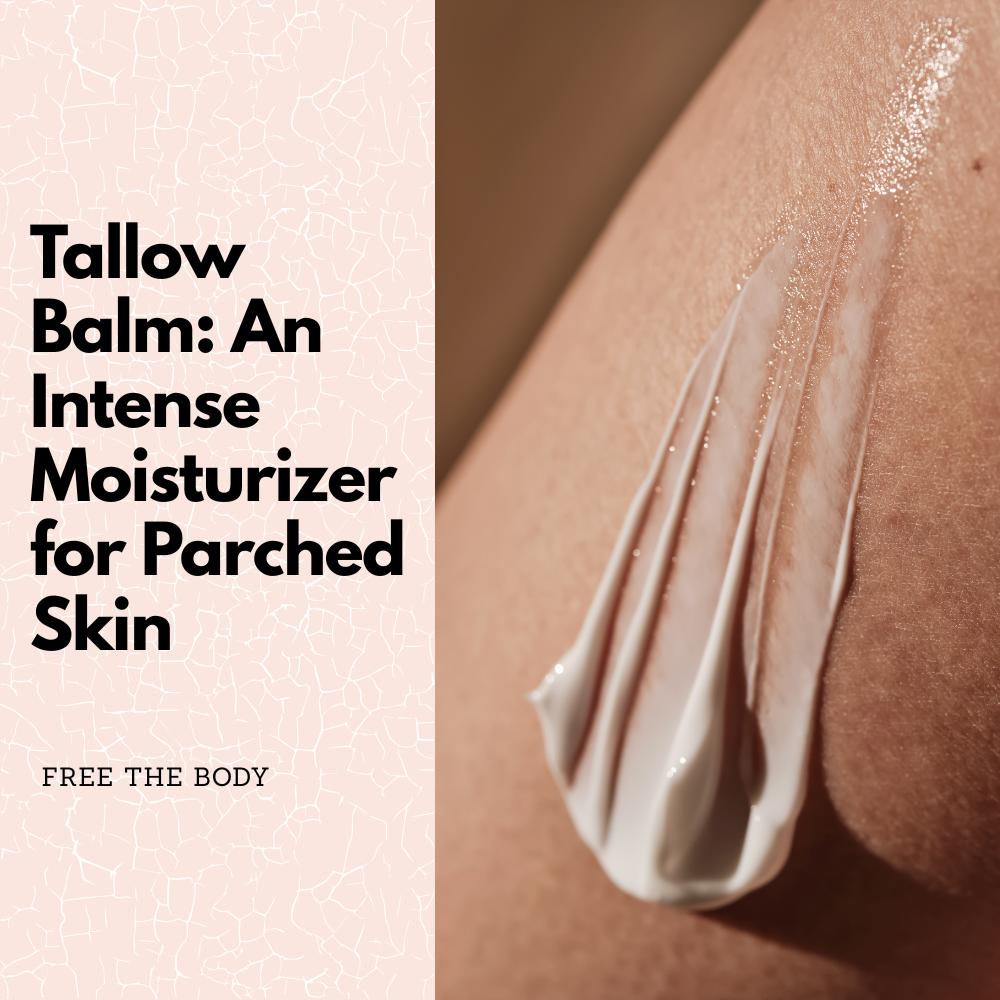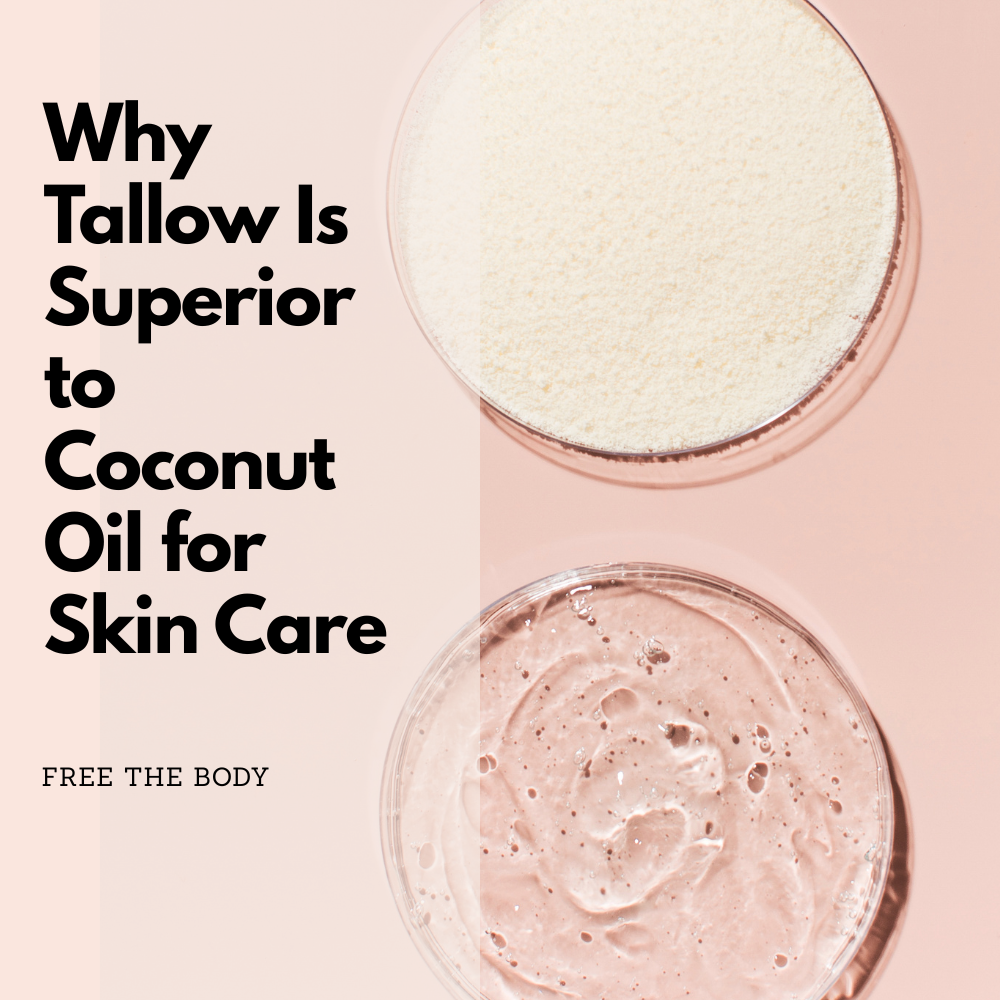Does Tallow Balm Clog Pores? Uncovering the Truth for Clear-Looking Skin
Curious about incorporating tallow balm into your skincare routine but worried about visible congestion or blemishes? This guide examines whether tallow truly contributes to pore congestion, if it's suitable for your skin, and how to use it with confidence. Uncover the facts and enjoy skin that looks and feels healthy and nourished—naturally.
What Is Tallow Balm?
Tallow balm is a natural moisturizer made from rendered animal fat—typically beef or lamb. For centuries, communities have used tallow for its gentle, nourishing properties. As the clean beauty movement grows, tallow balm is enjoying a resurgence, especially among those seeking simple, ingredient-conscious skincare alternatives.
- Simple Ingredients: Most tallow balm contains only tallow and sometimes added essential oils.
- Rich Moisturization: Its fatty acid profile closely mirrors that of human sebum, the skin's natural oil, making it an excellent hydrator.
- Gentle on Sensitive Skin: Many people find tallow provides a very comfortable feel, even for delicate or easily bothered skin, compared to some synthetic creams or plant-based oils.
However, with every trending skincare ingredient comes the big question—does tallow balm clog pores?
Decoding the Pore-Clogging Question
Pores are small openings on the skin's surface, allowing natural oils and sweat to escape. When these openings become congested by excess oil, dead skin, or product buildup, they can appear enlarged or lead to visible blemishes. So, it’s valid to ask: does tallow balm clog pores?
Understanding Comedogenicity
Comedogenicity refers to how likely a product is to contribute to pore congestion. Products are often rated on a scale from 0 (very unlikely to clog pores) to 5 (highly likely to contribute to clogging). Factors that influence this rating include:
- Molecular size of the oil or fat
- How similar it is to the skin’s natural oils
- Presence of heavy additives or impurities
Tallow Balm’s Comedogenic Rating
Pure tallow's comedogenic rating is typically a 2 out of 5. This suggests:
- It’s moderately unlikely to contribute to pore congestion for most people.
- Its composition remarkably mimics human sebum, making it generally well-tolerated by diverse skin types.
- Most high-quality tallow balms like Free the Body's are free of synthetic fillers (which can sometimes contribute to congestion), keeping them gentle on skin.
Remember, everyone’s skin responds uniquely. While some might notice visible blemishes with any new product, others often observe improved texture and clarity with tallow balm.
Benefits of Tallow Balm For Skin
Why has tallow balm become so popular, despite worries about pore congestion? Let’s look at the skin-loving benefits it offers:
- Deep Nourishment: Tallow contains vitamins A, D, E, and K—all wonderful for supporting a healthy-looking skin barrier and promoting a revitalized skin appearance.
- Essential Fatty Acids: The fatty acid profile, including oleic and palmitic acid, helps soften and protect skin, leaving no heavy residue.
- Purely Crafted: Lacking artificial fragrances or harsh preservatives, our balms are designed to be gentle and comfortable, even for delicate or easily bothered skin.
Who Should (and Shouldn’t) Use Tallow Balm?
Suitable Skin Types
Most skin types can benefit from tallow balm, especially:
- Individuals with very dry, flaky, or mature-looking skin in need of lasting hydration.
- People experiencing seasonal dryness or generally uncomfortable skin.
- Anyone who prefers minimal-ingredient, natural skincare products.
When to Exercise Caution
If you have oily-looking skin or are particularly concerned about visible blemishes, we always recommend performing a patch test. While tallow balm is unlikely to contribute to pore congestion for most, everyone’s skin is unique. Some individuals, particularly those whose skin appears very oily, may find it too rich for their face but perfectly suitable for the body.
How to Use Tallow Balm Without Clogging Your Pores
The way you use tallow balm can significantly influence how it performs on your skin. Maximize its cosmetic benefits and minimize the chance of pore congestion by following a few crucial tips:
- The way you use tallow balm can significantly influence how it performs on your skin. Maximize its cosmetic benefits and minimize the chance of pore congestion by following a few crucial tips:
- Start with Clean Skin: Always apply tallow balm to a freshly cleansed face or body, ensuring you remove dirt and excess oil.
- Use a Pea-Sized Amount: A little goes a long way. Applying too much product can sit on the skin and contribute to congestion.
- Warm It Up: Rub the balm between your fingers before applying to help it melt and absorb beautifully.
- Layer Properly: If using water-based serums, apply them first, allow absorption, then gently lock in moisture with a thin layer of tallow balm.
- Observe and Adjust: Pay attention to how your skin responds after a week or two. If you notice visible blemishes, consider reducing frequency or applying it only to drier areas.
Pro Tip
Use tallow balm mainly at night. Overnight, your skin revitalizes and benefits most from absorption, making tallow’s nourishing properties extra effective—without concern for product buildup under sunscreen or makeup.
Debunking Common Myths About Tallow Balm and Pores
Curiosity about “does tallow balm clog pores?” has produced plenty of myths. Let’s examine the most common and see how they hold up to the facts.
- Myth: Animal fats are always bad for skin. Wrong—many animal fats, including tallow, contain the same beneficial fatty acids found naturally in our skin.
- Myth: Tallow is too greasy for facial use. When applied in moderation, tallow absorbs well and often leaves a soft, non-greasy finish.
- Myth: Only plant-based oils are ‘clean.’ Animal-derived products like tallow have been used as skincare for centuries, especially before the advent of synthetic creams.
- Myth: If you have blemishes, never use tallow balm. Tallow balm may actually help clarify the appearance of skin for some, thanks to its gentle, supportive properties—so long as you monitor your skin’s response.
Tips to Prevent Pore Clogging With Tallow Balm
To further reduce the chance of congested pores when using tallow balm, consider these practices:
- Exfoliate Regularly: Gently remove dead skin cells to help maintain clear-looking pores.
- Simplify Your Routine: Avoid layering tallow balm over very heavy creams; it often works best alone or atop lightweight serums.
- Choose High-Quality: Select balms with minimal, pure ingredients (ideally grass-fed or pasture-raised sources).
- Mind the Climate: In hot, humid weather, use less product or reserve it for nighttime use.
- Wash Pillowcases Regularly: This simple hygiene tip helps prevent product or oil buildup while sleeping.
- Listen to Your Skin: If you notice extra congestion, scale back frequency or focus on drier areas only.
Real-World Results: What Users Say
Reviews across skincare forums and blogs show a wide range of experiences with tallow balm. The majority of users report:
- Softer, more hydrated skin with fewer visible dry patches.
- A more soothing feel compared to products with extensive ingredient lists.
- Some experience mild purging—a short-term increase in visible blemishes as skin adjusts—while others see no negative effects.
- A subset with very oily-looking skin prefers tallow for body use versus the face, especially if concerned about facial shine.
The variety of results highlights the need to personalize your approach. The answer to “does tallow balm clog pores” is neither one-size-fits-all nor extreme. Most people find it suitable, especially when used thoughtfully.
Conclusion
Tallow balm is generally unlikely to contribute to pore congestion for most, thanks to its skin-compatible formulation and absence of harsh additives. For best results, apply it in moderation and tailor use to your specific skin type and needs. Give it a try, and see how your skin responds—nourishing simplicity might be exactly what your routine needs.



